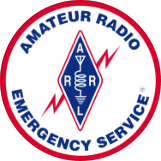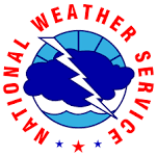
Serving the Mobile, AL Weather Forecast Office
and counties across Alabama, Florida, and Mississippi.
At no point may South Alabama Skywarn nor any Member be held liable for the actions
of an individual in the course of participation. Each member is responsible for their own
safety and behavior.
Field Spotters are responsible for activating when called upon by NWS or South
Alabama Skywarn. They will deploy to the field to survey storms and possible damage
without compromising personal safety. This may be done from a sheltered location or in
mobile operation.
Should a spotter find themselves in an impacted area, you will be expected to stop and
render assistance to those in need. Notify net control immediately if you do so. Relay
any critical information of trapped or injured to emergency services or net control. Leave
treatment to the professionals unless you have been specifically trained to do so.
Weather reports and information are to be relayed through designated repeaters for
each county. If you are unable to reach a net controller through the designated repeater
you can contact NWS via the regional repeater or through D-Star reflector 58B.
Registered Members
Requirements:
NWS Station Operators
•
Must read “Weather Radar Handbook” by Tim Vaquez
•
Must have a demonstrated competency with Gibson Ridge software
•
Must be a licensed amateur radio operator with a minimum of General
•
Must have completed NWS Advanced Spotter Training
•
Must be available to man NWS on short notice.
•
Must undergo a background check annually (waived if person holds an active security clearance)
Field Spotters
•
Must have completed NWS Advanced Spotter Training
•
Must have completed Field Training Program
•
Must be a licensed amateur radio operator
•
Must have a mobile 2-meter amateur radio (preferably with D-Star)
•
Must be registered with Spotter Network (www.spotternetwork.org)
•
Must have RadarScope mobile app with Spotter Network beacon active
No Member shall:
•
Issue forecasts or forecast discussions that haven’t been approved by NWS.
•
Dispatch spotters (except to warn of immediate danger and proper course to escape said danger).
•
Issue a warning that isn’t issued by NWS (except to warn of immediate danger).
•
Activate a net without an official call to action.
•
Enter any agency without instruction to do so by the Coordinator or Executive Officer.
•
Tamper with, alter, or otherwise remove, equipment without approval from the Director of Equipment, and
the Coordinator or Executive Officer.
•
Put themselves in danger to obtain storm reports.
•
File false or unconfirmed reports.
•
File 3rd party reports.
•
Act in an unprofessional manner toward any other member, the public, or NWS staff.
•
Contact NWS unnecessarily, or otherwise harass staff.
•
Disclose any information that could compromise security or safety of a facility or individual.
•
Speak to media without prior approval from the Coordinator or Executive Officer.
•
Engage in any illegal activity.
•
Engage in behavior that could endanger the public.
•
Take any action that could incite panic.
•
Dress themselves or vehicles in a manner that could be construed as “imitating law enforcement”

South Alabama Skywarn













